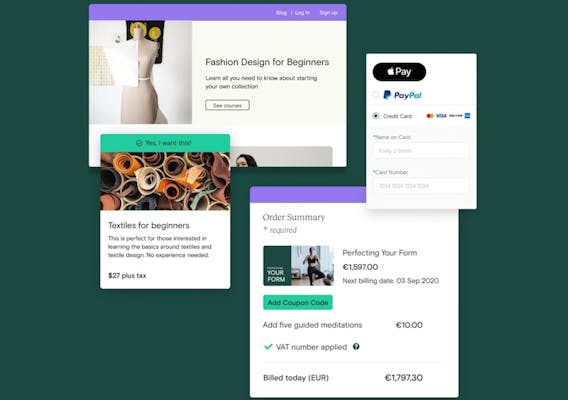
One of the biggest trends in social media this year is influencers who aren’t trying to sell you anything. These creators have branded themselves as “deinfluencers” and are flooding social media, especially TikTok. The purpose of de-influencing is simple: creators share with their audience what isn’t worth their money or time, especially fashion and beauty items.
The #tiktokmademebuyit hashtag has over 44 billion views on the platform. In a world of endless marketing, following deinfluencers is a breath of fresh air for some users. People have had enough unending pushes for overhyped products influencers sell because they’re getting paid. These creators instead give honest reviews about why a product might be a waste. Then they offer alternatives that they like better.
Behind the scenes, many deinfluencers still use their platforms to generate money from their audience. Wondering how? Here are the five ways these content creators can monetize their platforms.
Five ways to monetize your content as a deinfluencer
1) Use affiliate links to promote dupes or alternatives

Deinfluencers began trending because they are passionately honest about what products are worth your precious money. However, it doesn’t mean they don’t have dupes or alternatives to share with their audience. If they tell people that a $75 foundation isn’t a good buy, they might suggest a $15 one instead.
Using an affiliate program through places like Amazon or RewardStyle can help you earn revenue. These programs generate unique links that earn a commission for every purchase someone makes after clicking it. Creators share these links in their content to drive their loyal audience to their selected products.
2) Make brand deals with products they love

One big reason why people follow deinfluencers is that they’re attracted to that person’s ruthless honesty. After a while, deinfluencers can build up credibility by putting down popular products that have received a lot of attention. By showcasing why a product isn’t worth buying or overhyped, audience members might become more loyal.
So when a deinfluencer occasionally promotes a product they actually do love, their audience might be more inclined to purchase that item. Deinfluencers can use their audience to develop brand deals for the alternative products they suggest. Note: Audience metrics are invaluable when making these deals. Make sure to show how much interaction you get from your followers.
3) Selling your own alternative products

Deinfluencers can create significant business potential for themselves by exposing flaws in products from a particular industry or category. They just need to make their own alternative. For example, if they can’t find hair products they like for oily hair, they could create their own.
Another example is the massive success Logan Paul and KSI have found with their Prime hydration drink. KSI was a former G-Fuel spokesperson. Following KSI’s fight with Paul in 2019, the stars joined forces to make their own beverage. Prime has been a wild success, in part thanks to its superstar founders and limited market availability.
If a deinfluencer builds an audience that trusts their content, those people are an immediate market for a product line. While creating and selling a product requires monetary investment, it could lead to a big payday for a deinfluencer. The important thing is to make a product that’s in demand with the audience you’ve built.
4) Make ad revenue from YouTube while deinfluencing

YouTube pre-roll and banner ads are an option for a deinfluencer looking to make recurring passive income from their content. By enabling ads on their YouTube content, they make money when viewers click an ad displayed on their video.
This can appeal to deinfluencers who don’t want to earn revenue through affiliate deals to stay true to their credibility. However, there is a catch. You must join YouTube’s Partner Program to make money from ads. You’ll need 1,000 subscribers and 4,000 watch hours on your content in the last year.
Additionally, your content can be blocked from monetization if it’s violent, sexual, has cussing, showcases drugs, or is controversial.
5) Selling a course on de-influencing

As more people gain traction as deinfluencers, more people will be interested in learning how to make this type of content. In a world where influencer courses can cost thousands of dollars, a deinfluencer can find success teaching their way.
A deinfluencer can develop a class using course platforms like Thinkifc or Teachable. Make tutorials on creating content, engaging an audience, growing platforms, and earning money. Selling these courses is another potential passive income stream.
Courses can comprise videos, articles, quizzes, or anything else you think your audience would respond to. You can also sell individual video lessons on your website. By thinking creatively, you can turn your influence into a profitable course.




